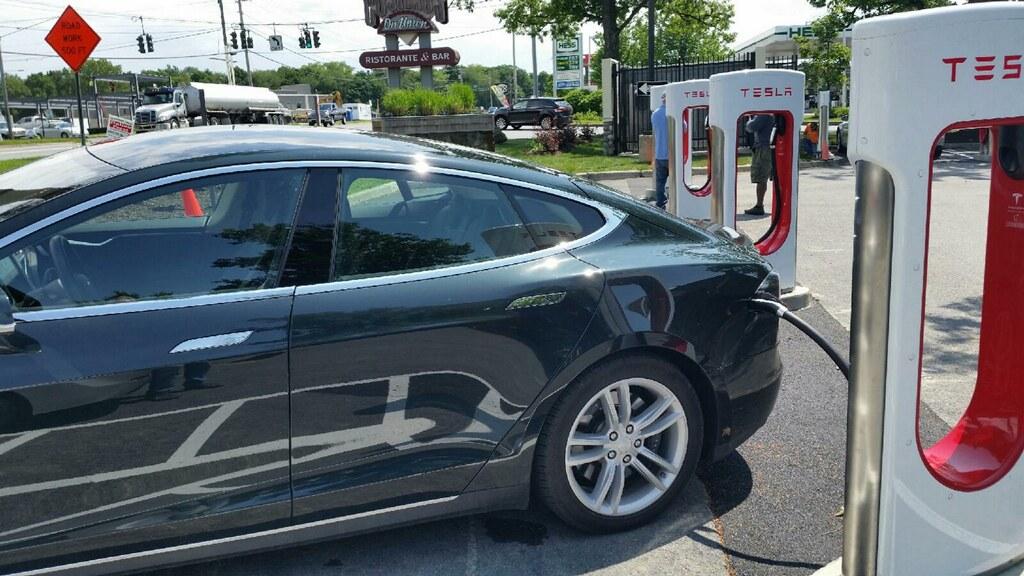
Tesla Supercharger site in Newburgh, New York, up and running - June 2015
It’s a new era in Teslaworld: the end of unlimited free Supercharging.
Starting on January 15, anybody who orders a new Tesla Model S or Model X will receive an annual allotment of 400 free kilowatt-hours (good for about 1,200 miles).
After that, they will have to pay for use of the Supercharging fast-charging network, at prices that vary from state to state.
Even the high rollers who drop $150,000 for a loaded P100DL will have to pay the charging fees.
DON'T MISS: Tesla to charge for Supercharger parking if charging is over, sometimes
In states that allow electricity sales by the kilowatt-hour, fees will range from 11 cents (Idaho) to 22 cents (Massachusetts) per kWh.
Typically, those rates are a bit higher than the rates a Tesla owner would pay his local utility to charge at home.
In my home state of New York, for example, the Supercharger rate is 19 cents/kWh. At my house, I typically pay about 15 cents/kWh for electricity.
In states that don’t allow sales by the kilowatt-hour, Tesla owners will be charged by the minute.
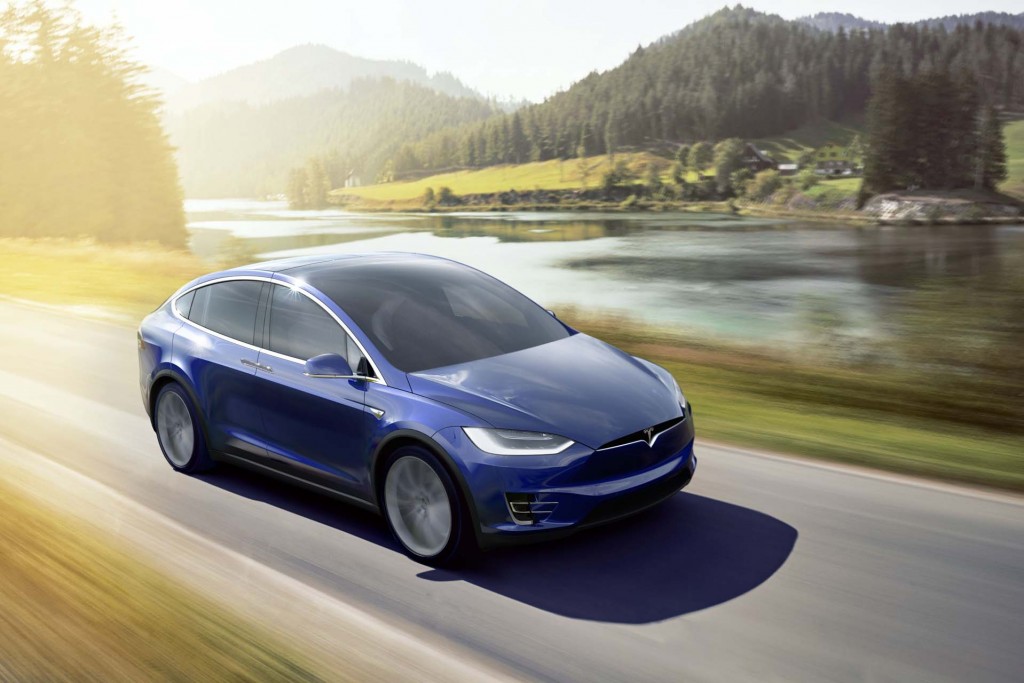
2017 Tesla Model X
Two different rates will apply: one for the typical Supercharger charging rates above 60 kW, and a lower one for charging below 60 kw, which occurs when the battery is nearly full or two cars are sharing a single charging circuit.
The by-the-minute rates are set so they roughly approximate the fee if figured on a by-the-kWh basis. Either way, a typical 60-kwh fill-up will cost $8 to $12.
That works out to roughly 4-6 cents per mile. That's still far less than gasoline to cover the same distance in a comparable vehicle.
ALSO READ: Electric Car Price Guide: every 2017 all-electric car, with specs
Grandfathered in
As a Model S owner for nearly four years now, I’m not affected by the new fees, which apply only to cars ordered from now on. Elon promised us “free Supercharging for life” back in 2012, and he’s sticking to that promise for those of us who own 2012 through 2016 vehicles.
As a heavy Supercharger user—about 10,000 miles a year, including at least one coast-to-coast round trip a year—I was naturally relieved to hear that, as long as I keep my car, I can continue to enjoy the benefits of free Supercharging.
While there's an undeniable financial benefit—10,000 miles of free Supercharging saves me $300-$500 a year—I’ve found that the primary benefit of free Supercharging is psychological: it just feels great to drive into a Supercharger stall, recharge the battery, keep my credit card in my pocket, and drive away.

Tesla Supercharger site with photovoltaic solar panels, Rocklin, California, Feb 2015
During my first Supercharger road trip, down the East Coast to Florida in 2013, I had that giddy feeling that this was too good to be true—like I was getting away with something slightly nefarious.
I continue to take delight in revealing, to anyone who will listen, the total fuel cost of my most recent 7,000-mile round-trip coast-to-coast run: zero.
Of course, Supercharging has never been really “free"—the cost is baked into the selling price of the car.
CHECK OUT: Waits for Tesla service get longer as more electric cars are sold
Until recently, Supercharging capability was a $2,000 option on 60-kWh versions of the Model S. Presumably, the price of the 85-kWh Model S was $2,000 higher because it included Supercharging as standard.
In effect, we’ve all prepaid for about 40,000 miles worth of Supercharged driving.
But in my mind, it sure feels free.
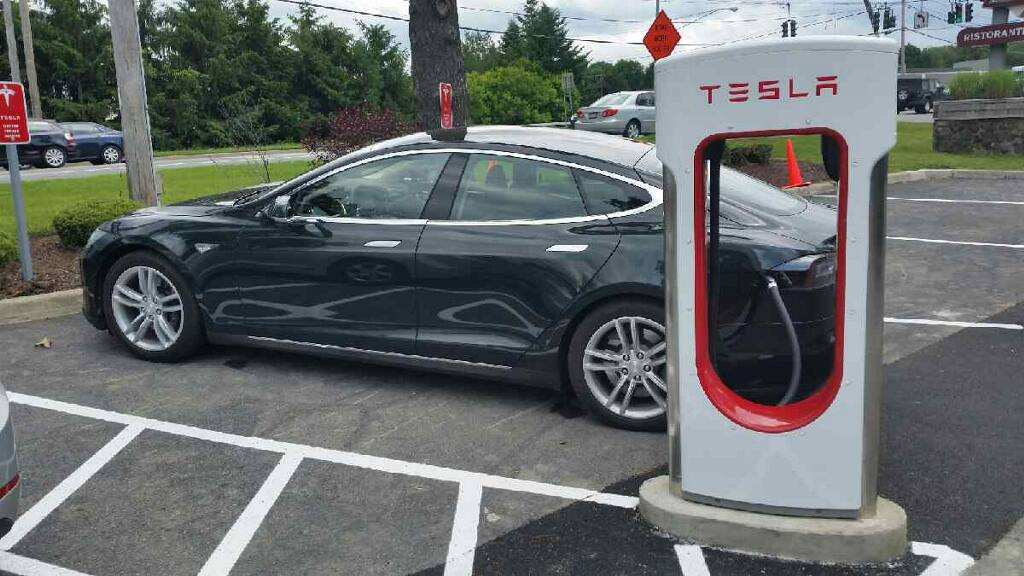
Tesla Supercharger site in Newburgh, New York, up and running - June 2015
Why a new policy?
It seems to me that prepaid “free Supercharging for life” was a great marketing tool that inspires tremendous brand loyalty. It certainly worked that way for me.
Tesla must have a compelling reason to change such a successful brand-building policy, even though it insists that it will make no profit from the fees.
“Tesla is committed to ensuring that Supercharger will never be a profit center,” says the company website. “Supercharging is offered to our customers below the price that it costs to provide the service.”

Tesla Supercharger site in Newburgh, New York, up and running - June 2015
Does that mean that the “baked in” Supercharger portion of the car’s price will be eliminated? Will the price of every Tesla be reduced by $2,000 after January 15?
Don’t hold your breath. If Tesla maintains current pricing, it can hardly claim that it’s not profiting from the new fees. However it handles the profit-and-loss accounting, Tesla will be making more money (or losing less) as a result of the new Supercharger fees.
But I find it unlikely that Tesla is doing this to squeeze out a few extra bottom-line bucks for its next quarterly earnings call.
READ THIS TOO: Tesla Letter To Rein In Local Supercharger Use
My guess is that Tesla, anticipating the coming tsunami of Model 3s that will be hitting the road (and the Superchargers) over the next few years, is worried about overcrowding.
In response, they're starting a long-term program to discourage Supercharger use, seemingly across the board.
(The recent addition of Supercharger “idle fees,” for already-charged cars that linger in their Supercharger slots in stations that are at least 50-percent full at the end of the charge, may be another weapon in that campaign.)
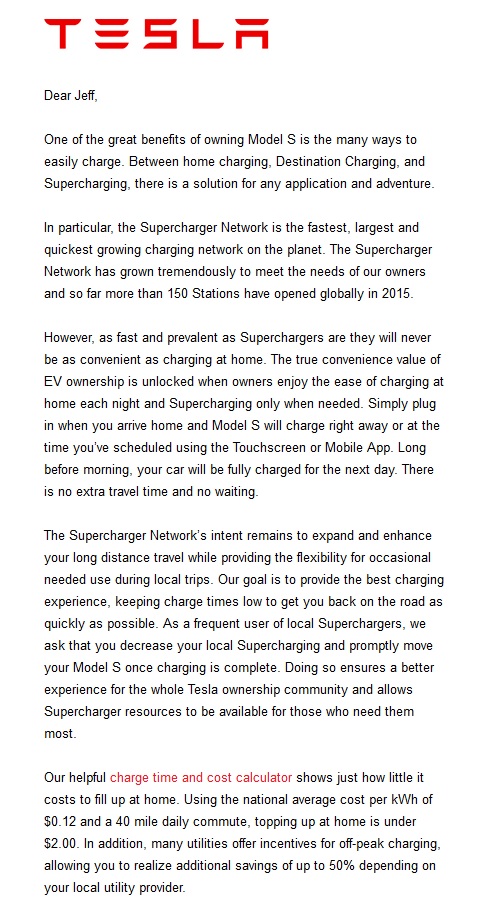
Letter from Tesla Motors to Model S owner regarding local Supercharger usage, August 2015
In my experiences—several hundred Supercharger visits to roughly 100 different stations—crowding is not yet a problem outside the urban California bubble.
But if the number of Teslas on U.S. roads quadruples by 2018, as Musk has claimed it will, that’s clearly going to change in a hurry.
Long-distance priority
For Tesla owners driving long distances across the country, of course, Superchargers are the only practical option. These are the core Supercharger users Tesla is trying to protect.
User fees and idle fees are presumably designed to discourage discretionary users—locals who, rather than charge at home, use the Superchargers out of convenience or penury.
(There are also Tesla owners who live in apartment buildings where they're not allowed to install a Tesla charging station for overnight use, but that's a different topic altogether.)
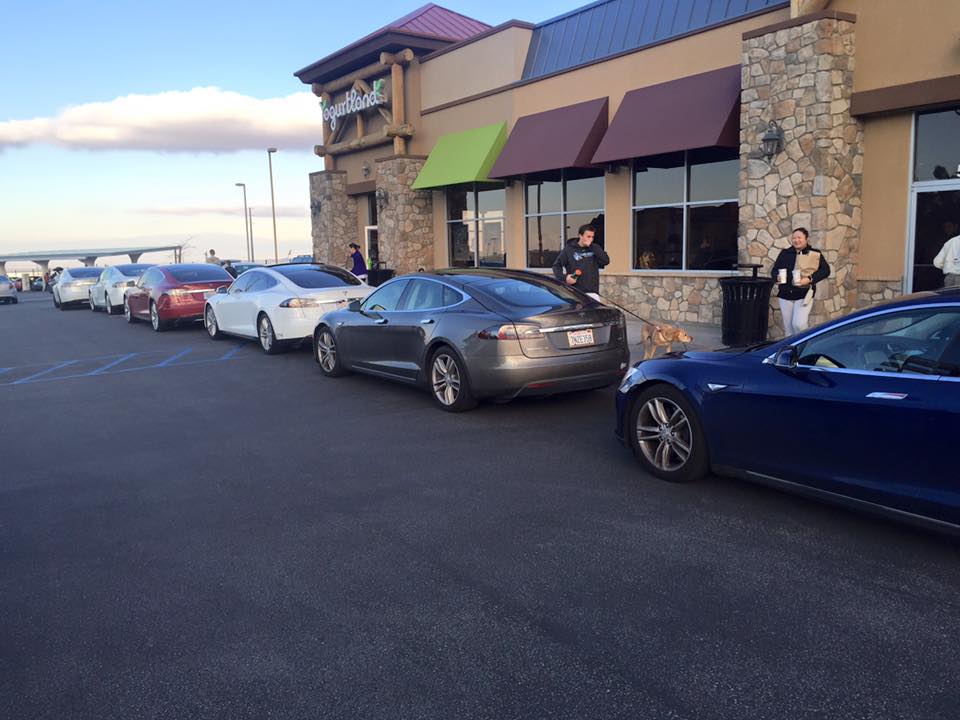
Tesla Model S electric cars at Tejon Ranch Supercharger December 26, 2015 (photo by TMC user Lump)
If discretionary users are the real targets of Tesla’s Supercharger disincentive campaign—and I’m pretty sure they are—it’s a shame the company can’t come up with a way to target them more precisely, without penalizing the long-distance drivers as well.
Under the current shotgun approach, a long-distance driver can end up paying both a charging fee (if he’s exceeded his 400-kWh limit) and an idle fee (if another car happens to pull in and bump station occupancy rate over 50 percent while he's charging).
Meanwhile, a local who hasn’t exceeded his 400-kWh limit and finds a near-empty station to use will pay neither.
Too bad there’s not a better way to encourage the bedrock ethic of Supercharging: long-distance cars always get first dibs.
Resale value
It will be interesting to see how the new fees affect resale values of used Teslas.
![Tesla Store Los Angeles [photo: Misha Bruk / MBH Architects] Tesla Store Los Angeles [photo: Misha Bruk / MBH Architects]](https://images.hgmsites.net/lrg/tesla-store-los-angeles-photo-misha-bruk-mbh-architects_100449434_l.jpg)
Tesla Store Los Angeles [photo: Misha Bruk / MBH Architects]
In the past, the company has assigned a $2,000 value to the “free Supercharging” option; it remains to be seen how much of that was the Supercharging part, and how much was the free part.
Tesla confirmed that both new “inventory” cars—loaners and demo vehicles—and Certified Previously Owned used vehicles bought from Tesla will retain their free-for-life Supercharger status if they had originally beaten the January 15, 2017 deadline.
For inveterate long-distance travelers like me, that could be a big factor in choosing between a custom-ordered or inventory car, or a new versus CPO car, in the months to come.
_______________________________________












